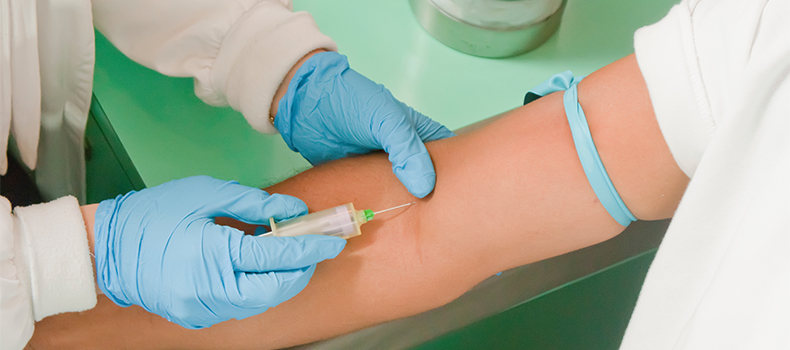Mastering Phlebotomy and EKG Skills: Essential Guide for Aspiring Medical Professionals
Introduction
Entering the world of healthcare requires a solid foundation in essential clinical skills such as phlebotomy and electrocardiogram (EKG) interpretation.These skills are the backbone of diagnostic testing and patient care, playing a pivotal role in areas like laboratory testing, emergency medicine, cardiology, and primary care. Aspiring medical professionals who master these techniques not only improve their clinical competence but also enhance patient trust and outcomes.
This comprehensive guide aims to equip you with the fundamental knowledge, practical tips, and best practices for mastering phlebotomy and EKG skills. Whether you are a student, new healthcare worker, or someone preparing for certification, understanding these essential techniques is crucial to your success in the medical field.
Understanding the Importance of Phlebotomy and EKG Skills
Before diving into the technicalities, it’s vital to recognize why proficiency in phlebotomy and EKG is essential for healthcare workers.
- Phlebotomy: It is the process of drawing blood for laboratory testing, transfusions, or donation. Accurate blood collection impacts test results,diagnosis,and treatment plans.
- EKG Interpretation: Records the electrical activity of the heart, vital in diagnosing arrhythmias, ischemia, and other cardiac conditions.Precise skills ensure correct diagnosis and timely intervention.
Both skills serve as the foundation for effective patient management and are frequently enough required across various healthcare settings like clinics, hospitals, and diagnostic labs.
Essential Equipment for Phlebotomy and EKG
Having the right tools is fundamental to performing these skills competently.Here’s an overview of essential equipment:
| Phlebotomy Equipment | EKG Equipment |
|---|---|
| Needles and Syringes | Electrocardiogram Machine |
| Vacutainer tubes | Electrodes and leads |
| Tourniquets | Gel pads or conductive paste |
| Alcohol swabs | Paper or digital printouts |
| Gauge selection tools | Patient cables |
| Bandages and gauze | Sharps disposal container |
Mastering Phlebotomy Skills
Step-by-Step Guide to Blood Collection
- Patient planning: verify patient identity,explain procedure,and ensure comfort.
- Gather equipment: select the correct needle gauge, tubes, and safety gear.
- tourniquet application: Tie proximal to the venipuncture site to engorge veins.
- Locate vein: Use palpation for venous access (common sites include median cubital vein).
- Insert needle: At a 15-30 degree angle into the vein smoothly.
- Draw blood: Fill collection tubes gently-do not apply excessive pressure.
- Remove needle: Release tourniquet before withdrawing the needle, then apply gauze.
- Post-procedure care: Apply pressure, label samples, and ensure patient comfort.
Practical Tips for Effective Phlebotomy
- Always verify patient identity and specimen labels.
- Practice proper hand hygiene and use gloves for safety.
- choose the correct vein to minimize discomfort and complications.
- Avoid using veins that are scarred, bruised, or collapsed.
- Be gentle to reduce the risk of hematoma and patient discomfort.
- practice regularly to develop confidence and precision.
Mastering EKG Skills
Performing a 12-Lead EKG
- Patient preparation: Explain the procedure, ensure patient is relaxed and pleasant.
- Positioning: Have the patient lying down or seated comfortably, recovery of proper limb positioning is crucial.
- Electrode placement: Attach electrodes to standardized locations:
- Right Arm (RA)
- Left arm (LA)
- Right Leg (RL) – frequently enough acts as ground
- Left Leg (LL)
- V1 to V6 precordial leads
- Connect leads: Attach leads securely to corresponding electrodes.
- Record the ECG: Ensure clarity of the tracing, instruct the patient to remain still.
- Review and interpret: Check the printout for artifacts,and begin basic analysis of rhythm and waveforms.
Practical Tips for Accurate EKG Recording
- Use correct electrode placement for consistent, high-quality recordings.
- ensure skin is clean and dry before attaching electrodes.
- Avoid overlapping leads or placement errors that may distort the reading.
- Keep lead wires untangled and secured.
- Review each tracing carefully for errors or artifacts.
Benefits of Mastering Phlebotomy and EKG Skills
- Enhanced employability: Certification in these skills opens doors in hospitals, clinics, and diagnostic centers.
- Improved patient outcomes: Accurate blood draws and EKGs facilitate correct diagnosis and treatment plans.
- Professional confidence: Hands-on skills bolster your confidence as a healthcare provider.
- Foundational skills: Serves as a stepping stone for advanced medical procedures and specialties.
Case Studies and Real-Life Experiences
Case Study 1: Accomplished Phlebotomy in Challenging Veins
A phlebotomist encountered a patient with fragile, small veins. Through gentle palpation and using a smaller gauge needle, the blood draw was successful with minimal discomfort. This experience highlighted the importance of patience, skill, and proper technique.
Case Study 2: Detecting Cardiac Abnormalities via EKG
An aspiring technician identified signs of atrial fibrillation on an EKG printout during a routine check. Prompt dialog with supervising medical staff led to timely diagnosis and management, showcasing the critical role of accurate EKG interpretation.
First-Hand Experience and Practical Training
Gaining practical experience is crucial to mastering these skills. Many training programs, including certification courses and internships, provide hands-on opportunities for practice. Here are some tips to maximize your learning:
- Attend workshops with real patients or mannequins.
- Seek feedback from experienced professionals.
- Record your procedures and review for enhancement.
- Stay updated with current best practices and guidelines.
Conclusion
Mastering phlebotomy and EKG skills is an essential step for aspiring healthcare professionals committed to providing quality patient care.These techniques demand precision, patience, and continual practice but offer immense rewards – from increased confidence to better diagnostic capabilities. By understanding the equipment, technique, and practical tips outlined in this guide, you will be well on your way to becoming proficient in these vital clinical skills. Remember, continuous learning and hands-on experience are your best tools for success in the dynamic field of healthcare.
